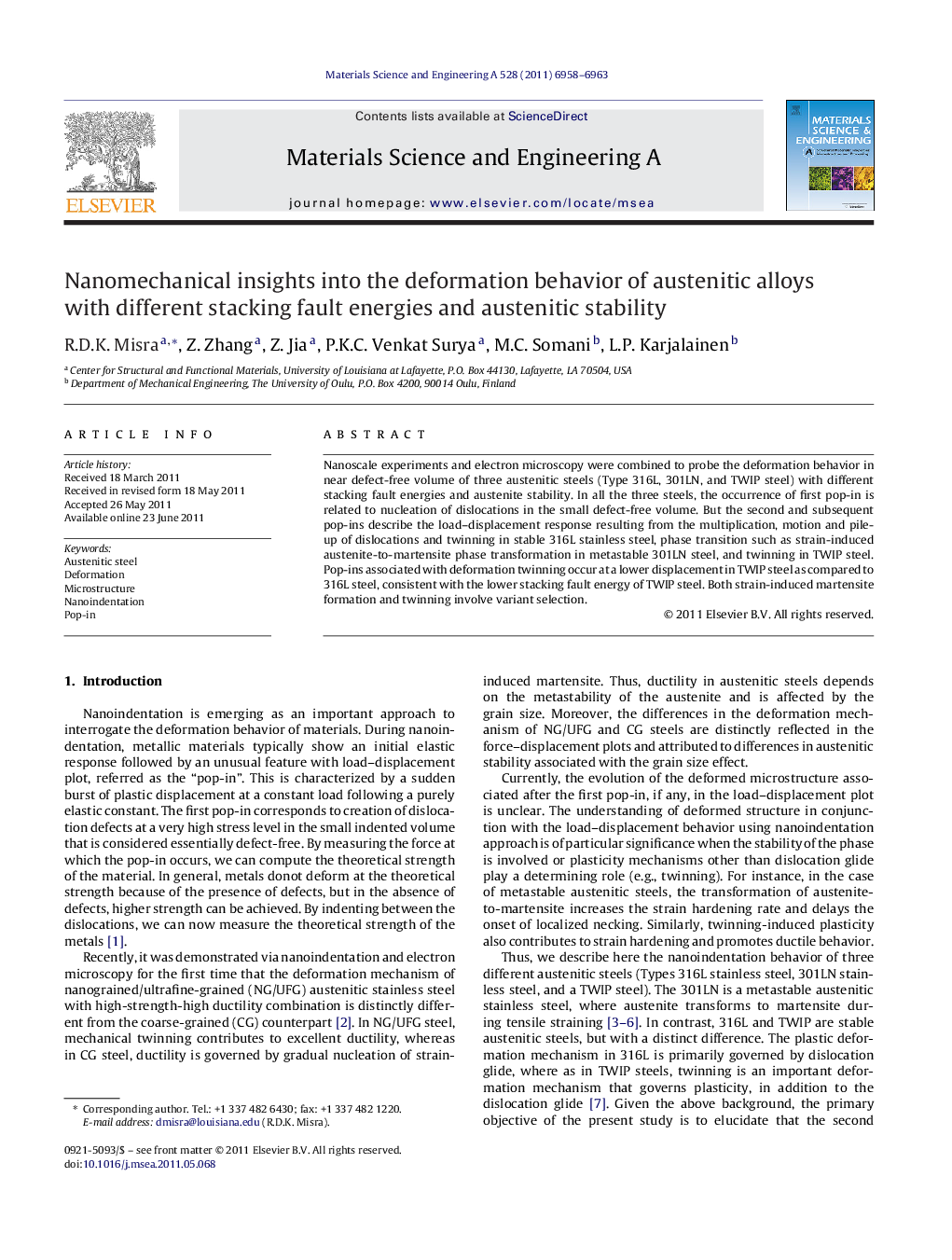| Article ID | Journal | Published Year | Pages | File Type |
|---|---|---|---|---|
| 1578377 | Materials Science and Engineering: A | 2011 | 6 Pages |
Nanoscale experiments and electron microscopy were combined to probe the deformation behavior in near defect-free volume of three austenitic steels (Type 316L, 301LN, and TWIP steel) with different stacking fault energies and austenite stability. In all the three steels, the occurrence of first pop-in is related to nucleation of dislocations in the small defect-free volume. But the second and subsequent pop-ins describe the load–displacement response resulting from the multiplication, motion and pile-up of dislocations and twinning in stable 316L stainless steel, phase transition such as strain-induced austenite-to-martensite phase transformation in metastable 301LN steel, and twinning in TWIP steel. Pop-ins associated with deformation twinning occur at a lower displacement in TWIP steel as compared to 316L steel, consistent with the lower stacking fault energy of TWIP steel. Both strain-induced martensite formation and twinning involve variant selection.
► Deformation mechanisms of Type 316L, 301LN, and TWIP steels were elucidated. ► Nanoindentation and electron microscopy was used to explain deformation behavior. ► Multiple pop-ins depend on the stability and stacking fault energy of the steels. ► Strain-induced martensite formation and twinning involve variant selection.
